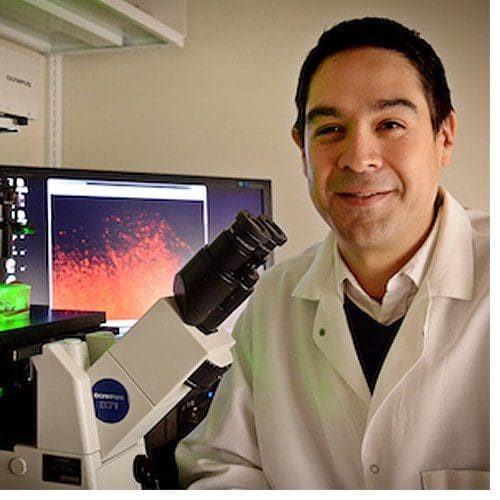
In a rapid-fire series of breakthroughs in just under a year, researchers at the University of North Carolina at Chapel Hill have made another stunning advance in the development of an effective treatment for glioblastoma, a common and aggressive brain cancer. The work, published in the Feb. 1 issue of Science Translational Medicine, describes how human stem cells, made from human skin cells, can hunt down and kill human brain cancer, a critical and monumental step toward clinical trials – and real treatment.
Last year, the UNC-Chapel Hill team, led by Shawn Hingtgen, an assistant professor in the Eshelman School of Pharmacy and member of the Lineberger Comprehensive Cancer Center, used the technology to convert mouse skin cells to stem cells that could home in on and kill human brain cancer, increasing time of survival 160 to 220 percent, depending on the tumor type. Now, they not only show that the technique works with human cells but also works quickly enough to help patients, whose median survival is less than 18 months and chance of surviving beyond two years is 30 percent.
“Speed is essential,” Hingtgen said. “It used to take weeks to convert human skin cells to stem cells. But brain cancer patients don’t have weeks and months to wait for us to generate these therapies. The new process we developed to create these stem cells is fast enough and simple enough to be used to treat a patient.”
Surgery, radiation and chemotherapy are the standard of care for glioblastoma, and that hasn’t changed in three decades. In months, the tumor comes back in almost every single patient, invariably sending tiny tendrils out into the surrounding brain tissue. Drugs can’t reach them, and surgeons can’t see them, so it’s almost impossible to remove all of the cancer, explained Ryan Miller, a coauthor of the study and neuropathologist at UNC Hospitals and associate professor at the UNC School of Medicine.